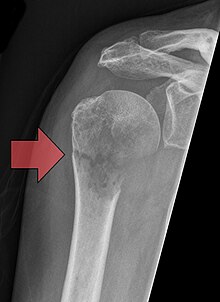Causes of Pathologic Fractures
- Pathologic fractures can be caused by osteoporosis.
- Other pathologies such as cancer, infection, inherited bone disorders, or bone cysts can also lead to pathologic fractures.
- Fragility fractures occur as a result of an injury that would not normally cause a fracture in a healthy bone.
- Typical sites for fragility fractures include vertebral fractures, fractures of the neck of the femur, and Colles fracture of the wrist.
- Pathological fractures in children and adolescents can result from metabolic, endocrine, neoplastic, infectious, immunologic, and genetic skeletal dysplasias.
Management of Pathologic Fractures
- Bone fixation should be done prophylactically if the Mirels score is more than 8.
- Internal fixation is preferred over conservative treatment.
- Treatment should also address the underlying cause of the pathologic fracture.
Presentation of Pathologic Fractures
- Pathological fractures in long bones appear as chalkstick fractures.
- They are transverse fractures nearly 90 degrees to the long axis of the bone.
- Compression fractures of spinal vertebrae can cause the vertebrae to collapse.
References and Resources
- Salehi, Sana et al. (2019) reported rare cases of knee insufficiency fracture in non-weight-bearing femoral condyle.
- Vanasse, Alain et al. (2005) discussed bone mineral density measurement and osteoporosis treatment after fragility fractures in older adults.
- Maheswari's Essential Orthopedics (3ed.) provides information on pathologic fractures.
- Mirels (2003) proposed a scoring system for diagnosing impending pathologic fractures in long bones.
- Various classification codes are used for pathologic fractures, such as ICD-10: M80 and ICD-9-CM: 733.1.
- The Wikipedia page on Pathologic fracture provides additional information.
External Links
- The Wikipedia page on Pathologic fracture provides additional information.
- The article is categorized under Bone fractures and Oncology stubs.
- The page includes hidden categories and short descriptions.
- There are statements with unsourced information from October 2020 and October 2017.
- The article is considered a stub and can be expanded.
A pathologic fracture is a bone fracture caused by weakness of the bone structure that leads to decrease mechanical resistance to normal mechanical loads. This process is most commonly due to osteoporosis, but may also be due to other pathologies such as cancer, infection (such as osteomyelitis), inherited bone disorders, or a bone cyst. Only a small number of conditions are commonly responsible for pathological fractures, including osteoporosis, osteomalacia, Paget's disease, Osteitis, osteogenesis imperfecta, benign bone tumours and cysts, secondary malignant bone tumours and primary malignant bone tumours.
Fragility fracture is a type of pathologic fracture that occurs as a result of an injury that would be insufficient to cause fracture in a normal bone. There are three fracture sites said to be typical of fragility fractures: vertebral fractures, fractures of the neck of the femur, and Colles fracture of the wrist. This definition arises because a normal human being ought to be able to fall from standing height without breaking any bones, and a fracture, therefore, suggests weakness of the skeleton.
Pathological fractures present as a chalkstick fracture in long bones, and appear as a transverse fractures nearly 90 degrees to the long axis of the bone. In a pathological compression fracture of a spinal vertebra fractures will commonly appear to collapse the entire body of vertebra.

